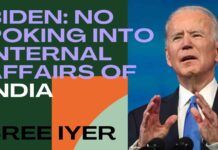
The announcement is significant given that the health insurance penetration in India is low
The biggest takeaway from the Indian Union Budget for 2018-19, which was presented by Finance Minister Arun Jaitley in Parliament on February 1, is the announcement of the world’s largest Government-funded healthcare programme. Call it ModiCare or whatever, it promises to revolutionise healthcare insurance in the country.
About 50 crore Indians (or 10 crore ‘vulnerable families’) — which is close to 40 percent of the country’s population — will be covered under this unique scheme. The Government will provide up to five lakh rupees per family per year towards hospitalisation costs in designated hospitals across the country. This comes as close as any scheme can in providing universal healthcare coverage in the country. Indeed, Finance Minister Jaitley underlined this fact, giving rise to speculation that the coming years could see the country moving towards such universal coverage, provided of course the Modi Government returns to power in 2019.
Given that the larger focus of the Budget had been on tackling rural distress which has become a major electoral issue, with the Finance Minister taking pains to address an audience which he and his regime believe holds the key to the ruling Bharatiya Janata Party’s prospect of returning to power for a second consecutive term, the health coverage project hasn’t got the attention it deserves in the narrative that has followed the presentation of the Budget.
The announcement is significant given that the health insurance penetration in India is low and many families, stressed on financial resources, are reduced to further poverty and unspeakable mental distress when they are struck by expensive medical care. In a report released in 2016, the National Sample Survey Office (NSSO) said that 85 percent of Indians were not covered under any health insurance plan in the year 2014. Just 18 percent of the urban population and 14 percent of rural population had health insurance coverage. The overwhelming share of the insurance here was Government-funded. By all accounts, the Government-run Rashtriya Swasthya Bima Yojana had become a showcase more for statistical delight, and had failed to deliver on the ground.
According to a research paper by academics of the Tata Institute of Social Sciences and the International Institute for Population Sciences, Mumbai, about 3.5 per cent of the population falls below the poverty line and five per cent of households suffers disastrous consequences due to expensive medical care. These figures were for 2011, and the recent numbers would be higher. While the healthcare network — both in the Government and the private sector — has grown by leaps and bounds over the decades, and quality care too has improved, the affordability of these facilities for the poor and the less-resourced has been barely addressed. Besides, the spread of quality healthcare facilities has been skewed. The study found that the country’s 73 per cent of the rural population gets just 20 per cent of the healthcare facilities while the remaining 27 per cent of the (urban) population receives 80 per cent of the facilities.
The National Sample Survey quoted earlier also found from its respondents that the biggest hurdle for the majority of people (over 55 per cent in rural areas and 60 per cent in urban regions) in seeking medical treatment was financial constraint. Predictably, rural respondents also said that the second biggest problem was the non-availability of a decent medical facility in the near neighbourhood.
There have been a few Government-driven schemes in India which have directly or indirectly sought to address healthcare insurance needs, but they have over the decades failed to deliver — either due to their inadequacy or because of systemic faults. The Employee’s State Insurance Scheme (ESIC) provides for social security in matters of sickness, disability or death. There is also the Central Government Health Scheme (CGHS) which is supposed to be a comprehensive contributory health insurance project. But it has suffered from poor quality of both delivery and accessibility.
Can the new scheme learn from the earlier mistakes or will it turn out be a dud at the cost of the public exchequer?
Note:
1. The views expressed here are those of the author and do not necessarily represent or reflect the views of PGurus.










